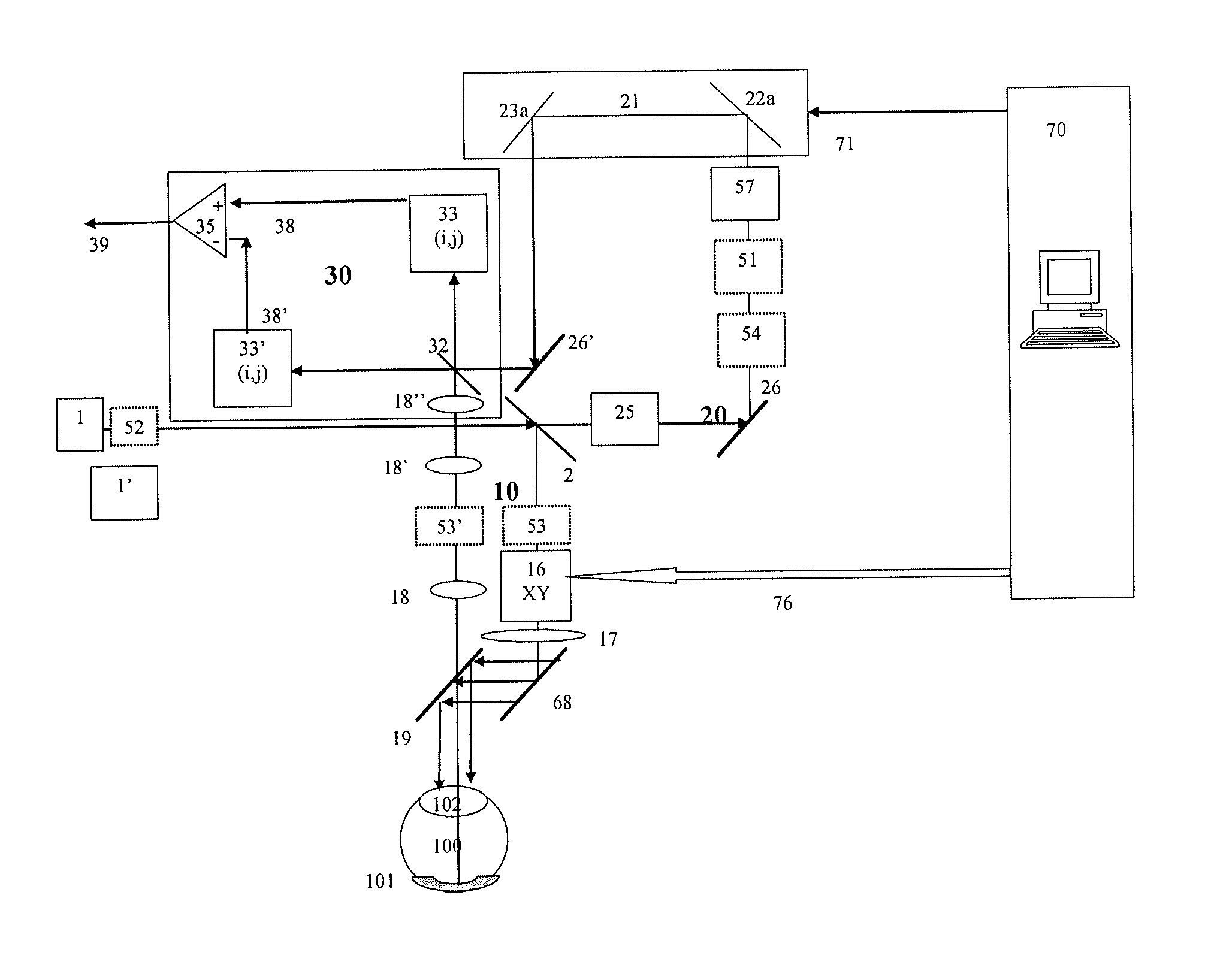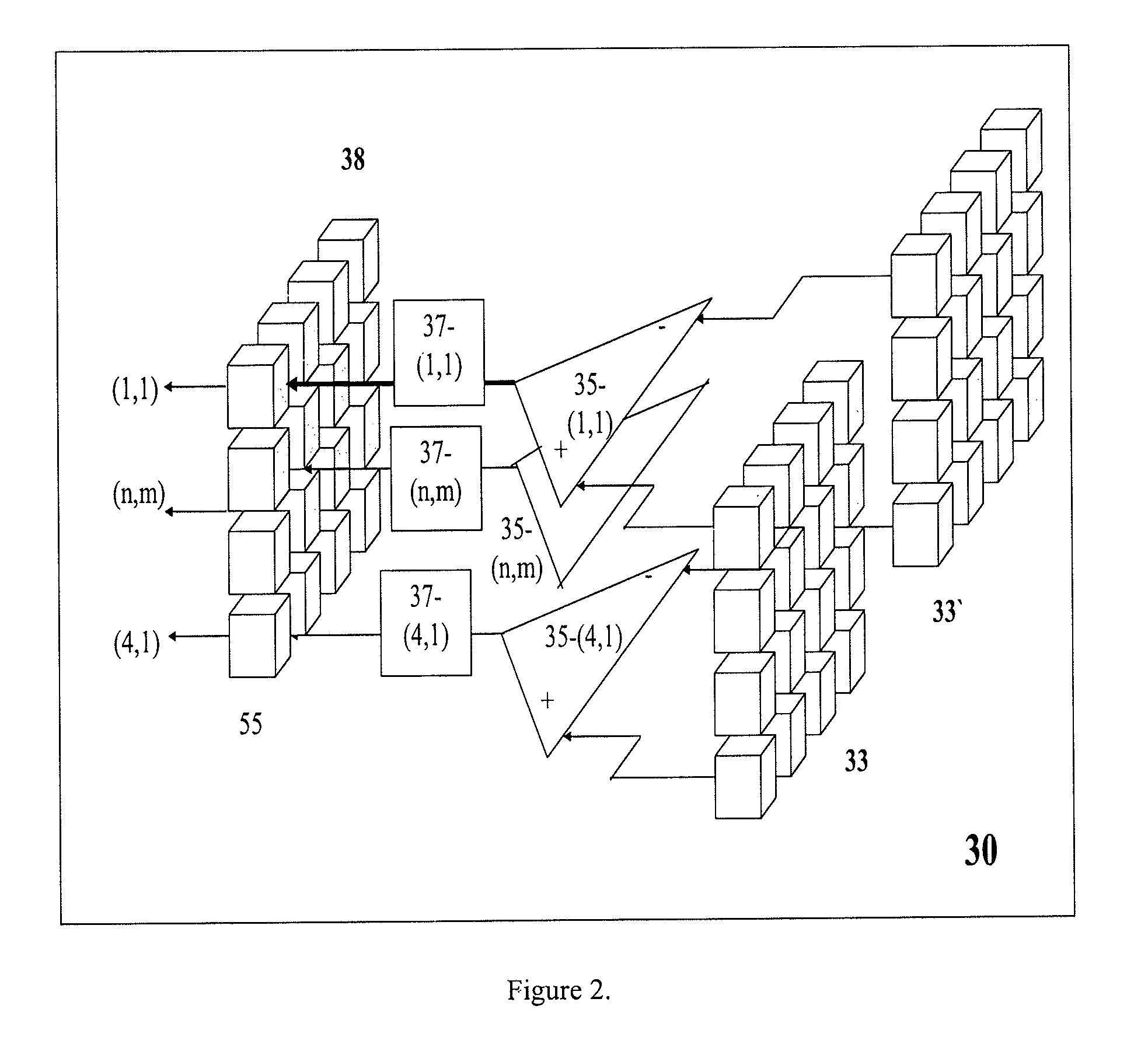Method for depth resolved wavefront sensing, depth resolved wavefront sensors and method and apparatus for optical imaging
a technology of depth resolution and wavefront, applied in the field of wavefront sensing and to wavefront sensors, can solve the problems of acquiring aberration information, unable to provide depth resolved wavefront information, and disregarded variation of aberration with depth, so as to reduce the scope of eliminating stray reflections, improve the attenuation of stray reflections, and double the strength of interference signals
- Summary
- Abstract
- Description
- Claims
- Application Information
AI Technical Summary
Benefits of technology
Problems solved by technology
Method used
Image
Examples
Embodiment Construction
LRT / CG-WFS
[0054]FIG. 1 discloses a first embodiment of the present invention. A low coherence interferometry principle is incorporated into a first embodiment of a WFS, operating according to the LRT method.
[0055]Light from a low coherent optical source, 1, is split by a splitter 2 towards a XY scanning means 16, which transversally scans the output beam via an interface optics 17, a mirror 68, and a splitter 19, over the cornea aperture, 102, of the eye 100, to focus on the retina 101. The blocks 16 and 17 are shown separately, however they could be interleaved, like the line scanner, a galvo-mirror, a piezo, an acousto-optic deflector, etc, followed by lenses or curved mirrors, and then by a frame scanner consisting of one of the possible means of scanning known. The scanning means 16 and interface 17 could also be implemented using a spatial light modulator (SLM), such as an addressable liquid crystal digital spatial modulator or other means known in the art. Light returns from t...
PUM
 Login to View More
Login to View More Abstract
Description
Claims
Application Information
 Login to View More
Login to View More - R&D
- Intellectual Property
- Life Sciences
- Materials
- Tech Scout
- Unparalleled Data Quality
- Higher Quality Content
- 60% Fewer Hallucinations
Browse by: Latest US Patents, China's latest patents, Technical Efficacy Thesaurus, Application Domain, Technology Topic, Popular Technical Reports.
© 2025 PatSnap. All rights reserved.Legal|Privacy policy|Modern Slavery Act Transparency Statement|Sitemap|About US| Contact US: help@patsnap.com



